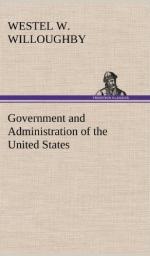The thirteen American colonies, which in 1775 dared defy the might of Great Britain, and which in a stubborn struggle were able to win their independence, were settled at various times, and by colonists actuated by widely different motives. At the time of the beginning of their resistance to the oppressive acts of their mother country, they were, in their governments, entirely separate from and independent of each other. “Though the colonies had a common origin, and owed a common allegiance to England, and the inhabitants of each were British subjects, they had no direct political connection with each other. Each in a limited sense, was sovereign within its own territory.... The assembly of one province could not make laws for another.... As colonists they were also excluded from all connection with foreign states. They were known only as dependencies. They followed the fate of their mother country both in peace and war.... They could not form any treaty, even among themselves, without the consent of England."[1]
[Footnote 1: Story’s Commentaries on the Constitution, Vol. I, p. 163.]
All the colonies did not bear the same relation to the English government. Owing to the different manner in which the right of settlement, and occupancy of the soil had been obtained from the king, the colonies had obtained different rights of government, and were placed under different obligations to the crown. There came thus to be three types of colonial governments; the provincial or royal, the proprietary, and charter governments.
_#I. Provincial Colonies.#_—Those colonies which possessed a provincial form of government were royal colonies, being governed almost entirely by England, as she governs many of her colonies to-day. At the head of each was a Governor appointed by the King of England. He was assisted by a council, also appointed by the king. The constitution and laws for this form of government were contained in the commission and instruction given to the Governor by the English government. By them the Governor was empowered to summon a representative assembly. The legislative body consisted, then, of the Governor, his council, appointed by the king, and a lower house elected by the people. The Governor had the right of veto, and the power to dissolve the assembly. The legislature could make laws, provided they were not repugnant to the laws of England. These laws were subject to the approval of the Crown. The governor, with the advice of his council, could erect courts, appoint judges, levy forces, etc. From the highest courts in all the colonies an appeal lay to the English King in Council.
_#II. Proprietary Colonies.#_—The English King often gave to individuals large tracts of land in the New World. In addition to ownership of the soil, was given in many cases the right to establish civil government. These proprietors had all the inferior royalties and subordinate powers of legislation. The proprietor could appoint or dismiss the governor, he could invest him with the power to convene a legislature, with power to veto its acts according to his wishes, and to perform all other powers of a governor. All laws made, those of Maryland excepted, were subject to the approval of the English Crown.




